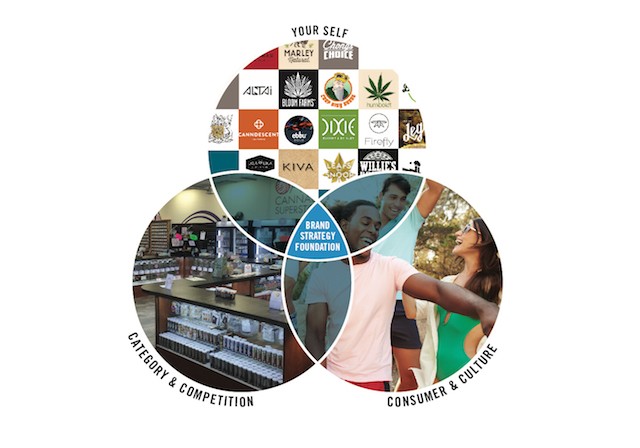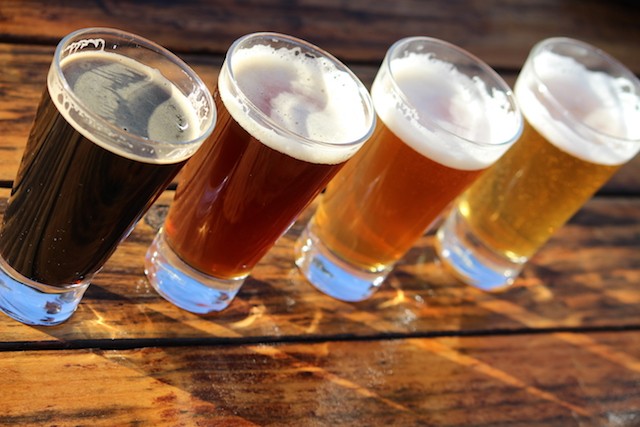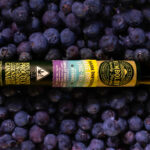As brand strategists and packaging designers, it is fascinating to witness the cannabis industry evolving so quickly. Through our work with Colorado-based ebbu and others, it has also been rewarding to apply the lessons we have learned from many years of working in the beer business to our work in cannabis.
Currently, the topics of beer sales and cannabis are poised to collide in regions where marijuana has been legalized. People wonder how the new upstart will affect the incumbent, and it’s not hard to imagine how that conversation starts, especially when you consider the role beer, wine and spirits, and recreational cannabis play in certain adult social occasions and how both address similar consumer needs.
Therein lies the opportunity for cannabis brands to educate and differentiate.
Like craft beer in its early days, cannabis brands are challenged by confusion in the marketplace brought about by preconceptions, misconceptions, and inexperience. With craft beer, consumers initially were overwhelmed by so many new tastes and unexpected ingredients. Similarly, the sheer number and names of cannabis strains require deep knowledge and, ideally, a decoder ring.
In its early days, “regular beer drinkers” were apprehensive about ordering a craft beer that might be too—insert challenging palate description here—to drink more than a few sips. New-to-cannabis consumers also are skeptical about trying something new. Even lapsed users who were old pros in college find themselves more than a little lost when visiting a Denver dispensary while on a weed tour from out of state.
In much the same way early adopters of craft beer helped their friends taste the promise of “real beer,” cannabis aficionados are taking up the cause and helping newcomers make sense of all the herbal options. Within craft beer, industry players found success educating influential bartenders to serve as guides for those stepping out of comfortable territory. Empowering budtenders with the information and the right brand story to tell should prove equally successful for those seeking to lead in cannabis.
For the industry to fully realize its potential at the rapid pace many predict, cannabis entrepreneurs need to appeal to a broader mainstream consumer base without losing their current franchise. Given cannabis consumers’ needs are as diverse as the strains of the plant itself, knowing one’s audience is a critical first step for the industry to connect with and become part of the mainstream.
This is important because, no matter what its past associations, cannabis is just another consumer product. Shed the “pothead” stigmas and the pre-legalization baggage, and you’ve got a plant that can be used to produce products for everything from treatment of life-threatening disease to relief from everyday ailments to ways to simply unwind with friends.

With all the focus on mainstream consumers, let’s not gloss over the current base of today’s pot market, those who have been around awhile, many of whom embrace some of the naughtiness of marijuana and its counterculture bent. In many ways, they are the driving force of the industry and will be the tip of the arrow opening the market. As this unfolds, the stigma of pot and its counterculture likely will slowly erode, but only if the industry leads by kicking its own habit of living in that past.
For branding professionals closely watching the industry, there is good news: many cannabis brands are already making the move. Smart dispensaries borrow ideas from retail leaders and wash their stores with better lighting, encourage exploration with well-designed displays, and employ techniques to improve the shopping experience, including organizing their selections by desired mood or experience. All of this helps build credibility and trust among buyers who frequent these evolved dispensaries. On the product side, huge strides will be made if the proponents of product reformulations keep their promise to deliver truly predictable experiences.
With mainstreaming comes the classic needs of a consumer-led industry. As cannabis becomes more readily available within the legalized system, consumers will seek information. Smart brands—and the stories they tell—will be the best sources for those insights to help consumers understand and differentiate between choices along the journey. Cohesive and clear messaging directly to consumers via packaging is a good starting point.
While a huge part of branding is storytelling, winning over the long term requires more than a great founders story. Craft beer companies have learned this. The “we were a couple of guys homebrewing, and our friends said we should sell our beer” story had its time and place. Brands today must go even further to make an ongoing emotional connection with their consumers while providing tangible, functional benefits that are proven and sustainable.
This point was front and center at the 2017 Craft Brewers Conference during a panel discussion entitled, “Staying Relevant After All These Years.” Panelists from Russian River, Drakes, Firestone-Walker, and Karl Strauss chalked up their success to operational attributes including high-quality product, great distributors and employees, consistency, and adaptability. Hardwiring these operational wins into their stories has built their credibility and believability over time.
The panel participants also talked about how important building a relationship with consumers is to their longevity. That relationship, that emotional bond, supported by real product differences made these companies not only resilient but helped develop them into powerhouses, who are bucking the current declining trends and still growing at double digits. The emotional promises at the core of each brand now are supported by tangible, functional reasons to believe, making them even stronger.
A common DNA element across most strong craft beer companies is a relationship to the community. From sponsoring neighborhood events to buying locally sourced ingredients, craft brewers have set down firm roots. That’s one of the reasons there’s such uproar around the consolidation of craft beer as the mega brewers buy up smaller independents. Heineken’s recently completed purchase of Sonoma-based Lagunitas Brewing caused quite a stir, for example.
Instances of home-grown companies going for the buyout may represent a caution for cannabis, as well, particularly as growers and marketers become one and the same to localize their brands.
Today, as the legalization of cannabis is getting real, it’s time for the industry to get real, too. There is plenty to learn from craft beer, from how the segment started and grew in popularity to where it finds itself in its current state of affairs, as the segment grapples with its own evolution and maturation.
Like craft brewers a decade ago, it’s time for cannabis entrepreneurs to start thinking from the consumer’s point of view. It’s time to educate and differentiate. And it’s time to realize new-to-pot consumers don’t know how to use a vape pen. Yet.














